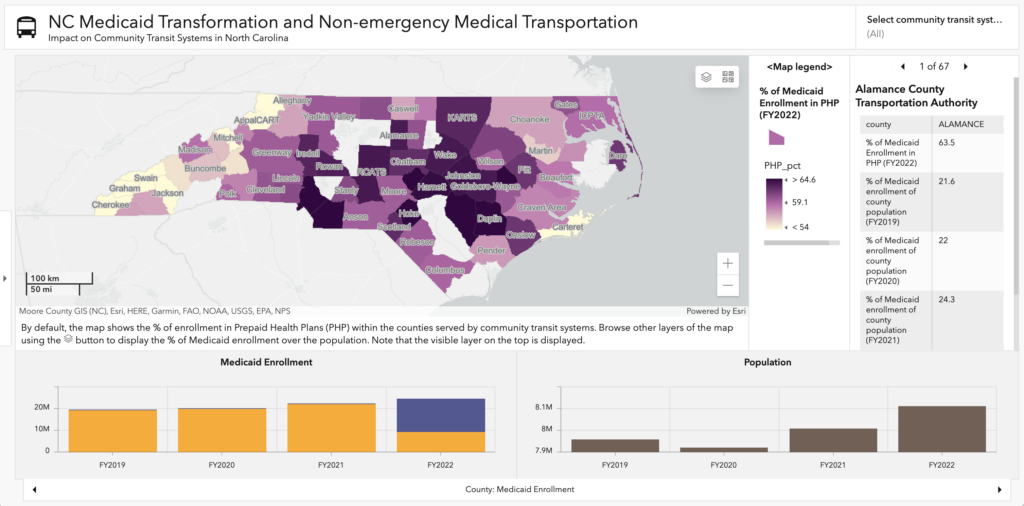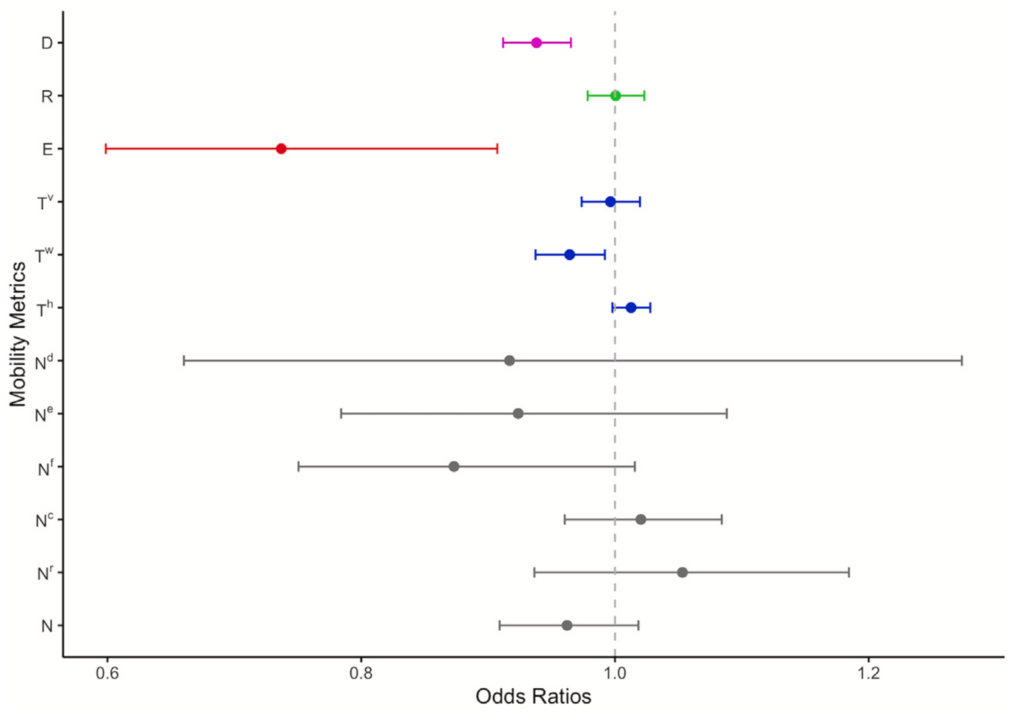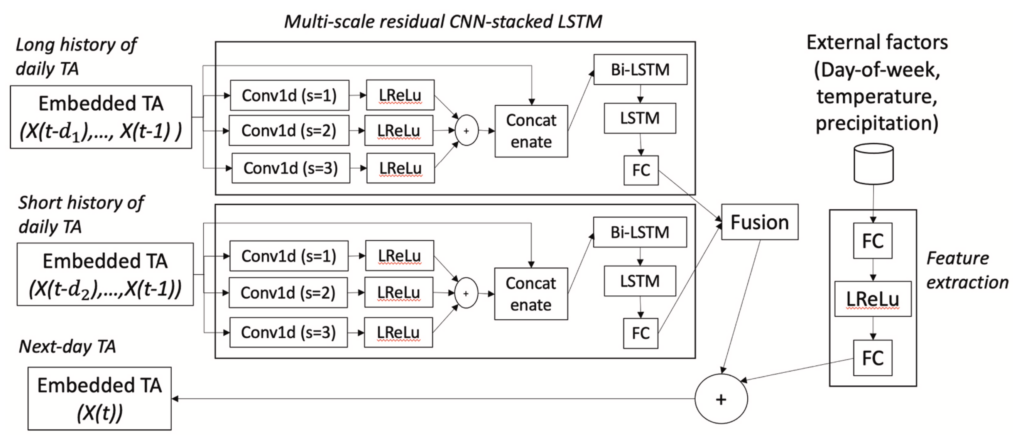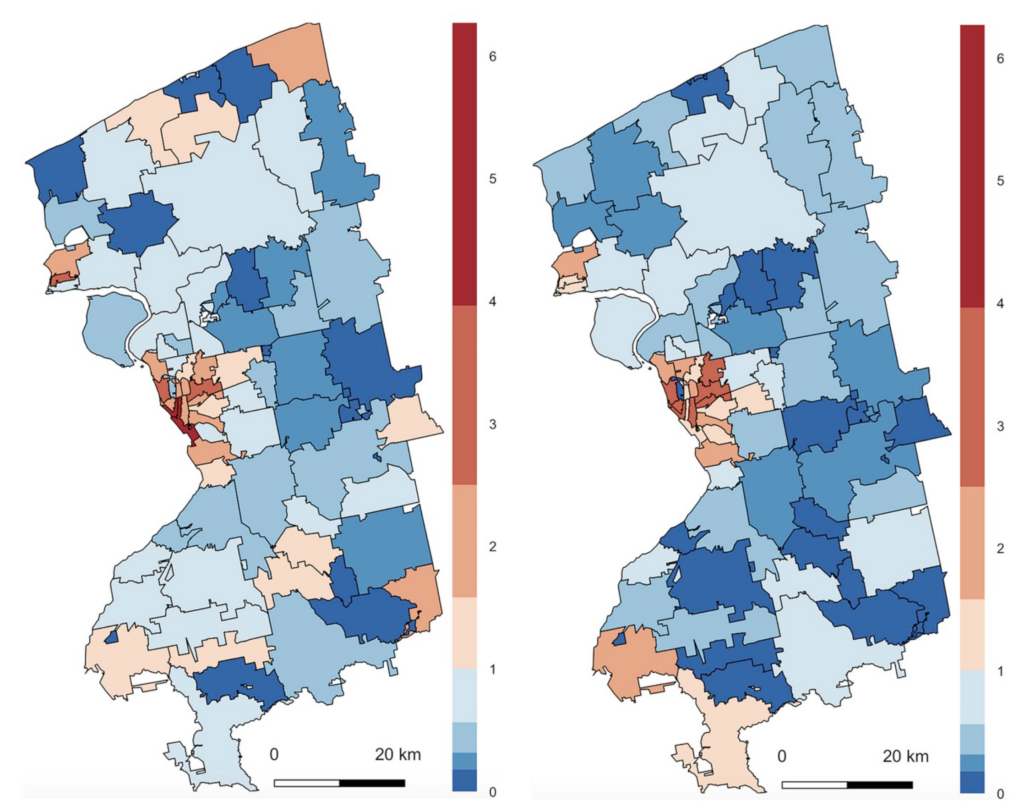Medicaid Transformation and Community Transit Systems
In North Carolina, Medicaid Transformation started on July 1, 2021, transitioning Medicaid beneficiaries from a fee-for-service system to a managed care model. We developed a web application as an exploratory analysis tool to explore the impact of Medicaid Transportation on the spatial and temporal variations of the trips served by community transit systems, focusing on the Medicaid-funded trips and non-emergency medical transportation (NEMT) services.
Changes in Routine Mobility Patterns and Influenza-like Illness
This study conducted a statistical analysis to evaluate the association between changes in routine mobility and ILS using mobile phone-based GPS traces and self- reported surveys from 1,155 participants over the 2016–2017 influenza season. For each individual, routine mobility patterns were quantified by a set of mobility metrics. We evaluated the association between the changes in individuals’ activity patterns and their experiences of influenza-related symptoms, which varies by gender and socioeconomic status, using a time-stratified case-crossover analysis.
Inference of Daily Time-Activity Patterns from Smartphone Geolocations: Deep Learning approach
In this research project, we enhanced the inference of mobility patterns from incomplete geolocation data collected by smartphones, developing multi-scale residual Convolutional Neural Network-stacked Long Short-Term Memory model. More specifically, the proposed deep learning model was trained to learn the temporal dependency between daily activity patterns at multiple temporal scales and used to address missing data problems.
Socioeconomic Determinants of Pediatric Asthma Prevalence
This study examined if emergency department visits for pediatric asthma are associated with socioeconomic status in the neighborhoods and how the association changed with societal change such as financial influx from regional economic development. A spatial difference-in-difference (DID) model was used for the statistical inference. The research found a racial and socioeconomic disparity, specifically elevated risks of pediatric asthma-related emergency department visits in the neighborhoods with lower household income levels and a higher proportion of African American population.




